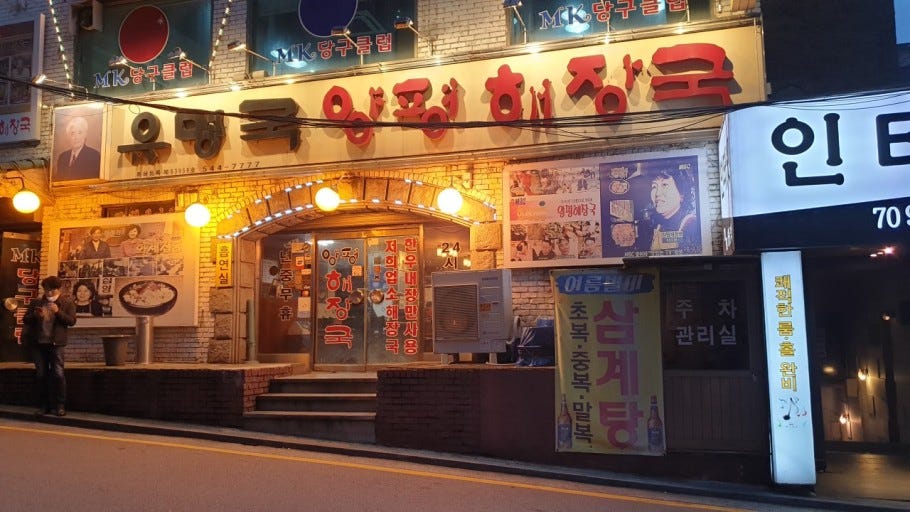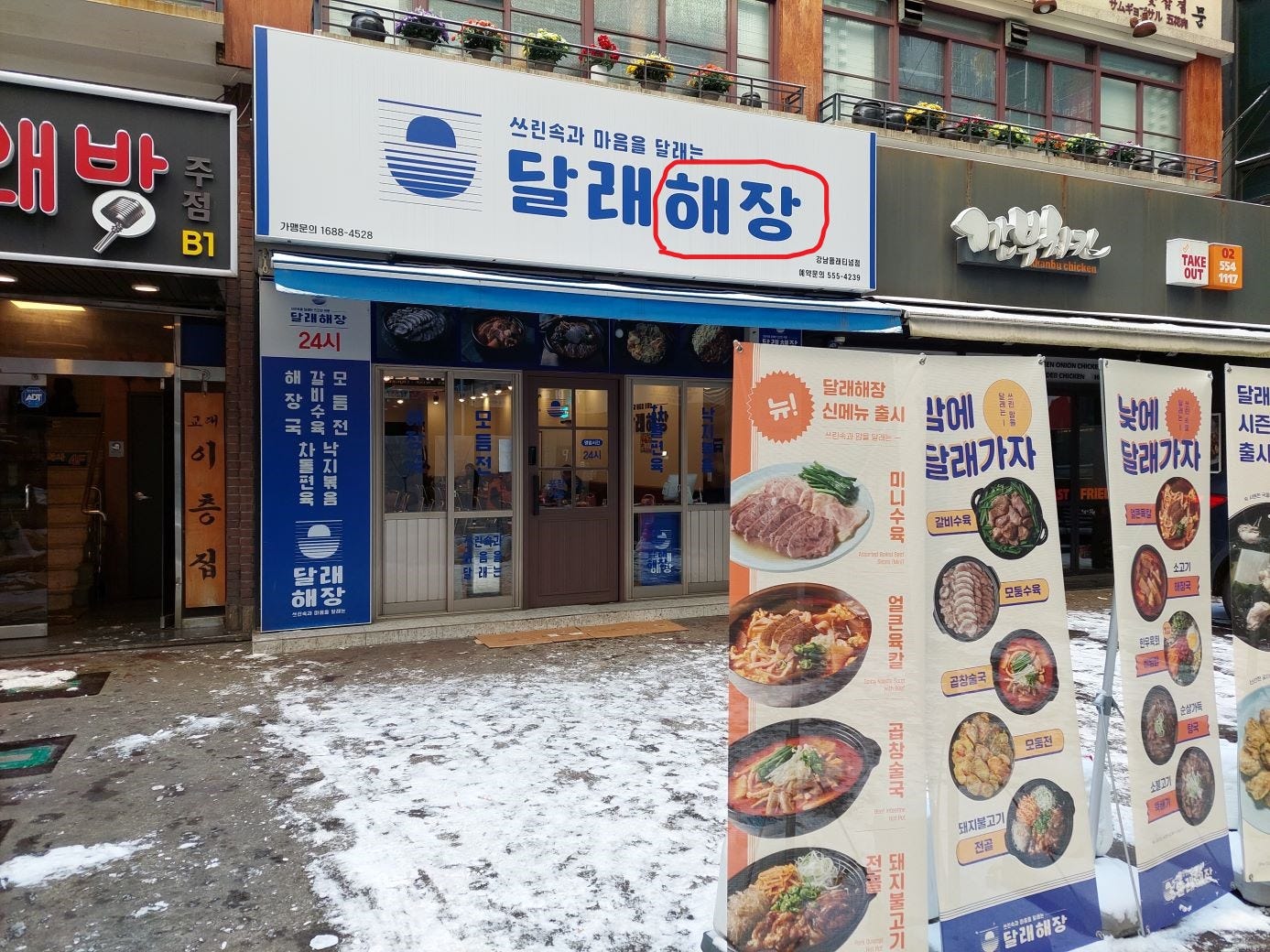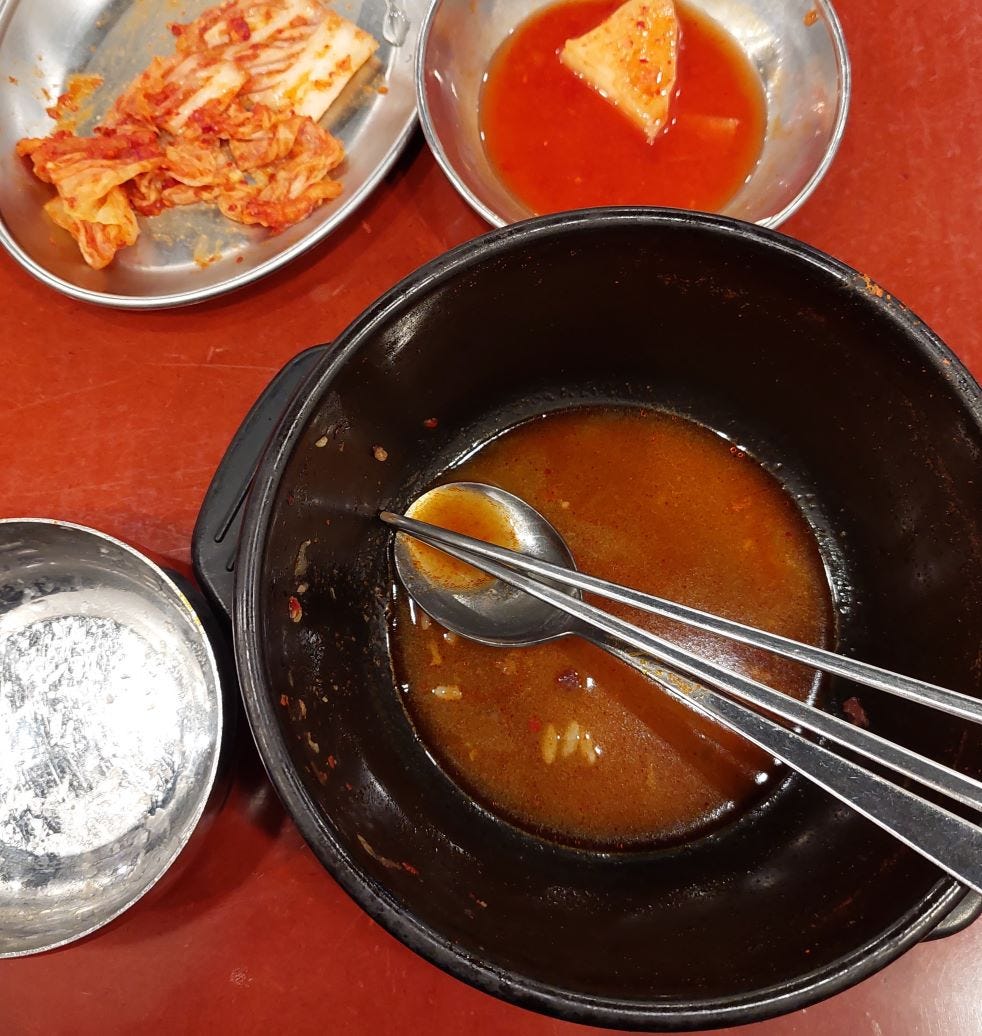(wrote this stuff in Seoul and editing it near Shinjuku, Tokyo right now.)
I have a slight fear of flying. Not a debilitating fear, but sweaty-palms-whenever-there-is-turbulence fear. That’s why I can’t sleep and barely eat on the plane. And that’s a problem for a 13-hour transpacific flight from LA to Seoul. After that, add another 60-to-90-minute airport limousine bus ride getting to my place near Gangnam Station. Who the hell said that “getting there” is the half the fun?
But, there is a very reliable savior once I’m there. As soon as I drop my luggage, I head straight to a hae-jang-guhk (해장국) place 3 bus stops away (but I usually take the 35-minute walk). Every. Single. Time. (I’ve just discovered this place moved to another location about an hour away, which sucks for me.)

That queasy feeling and upset stomach after a long flight compared to being hungover from drinking the night before. How different are they, really?
After a bowl of hae-jang-guhk, a little bit of sweat, and I’m as good as new.
In one of the food-related Korean TV shows that I watch, I heard the host say something that I had never thought about before.
Korea is the only country in the world that has foods named specifically for hangovers.
Not that other countries don’t have hangover cures, but dishes named specifically for hangovers? They only exist in Korea, he said.
Whether the statement is true or not, the point is—Koreans drink a lot and they need hangover fixes on a regular basis. So much so, you will see the word “해장국” in the streets of Seoul and everywhere else like you see the word “Starbucks” in US (well, maybe not that many).
Let’s first break down the word hae-jang-guhk (해장국). Guhk is soup (I’m trying to stay away from “gook” spelling). Hae-jang (解腸) literally means, “to solve or unknot” your “inner organs.” As self-explanatory as it is, the word means “hangover cure soup.”
There is a competing theory about the name, but since nobody references it, let’s just skip it.
Interesting history behind this. Books written 300 years ago describe something called hyo-jong-gaeng (曉鍾羹, 효종갱), meaning “hyo = dawn”, “jong = bell”, “gaeng = soup,” obviously referring to a soup that you eat in the early morning. This is thought to be the very first delivery food, as well as being the very first “fast” food. There are records of this soup being delivered in the wee hours of the morning over the walls of noblemen’s houses.
So, I went to one of the hae-jang soup places nearby. I wasn’t trying to recover from the long flight—it was just so damned cold.
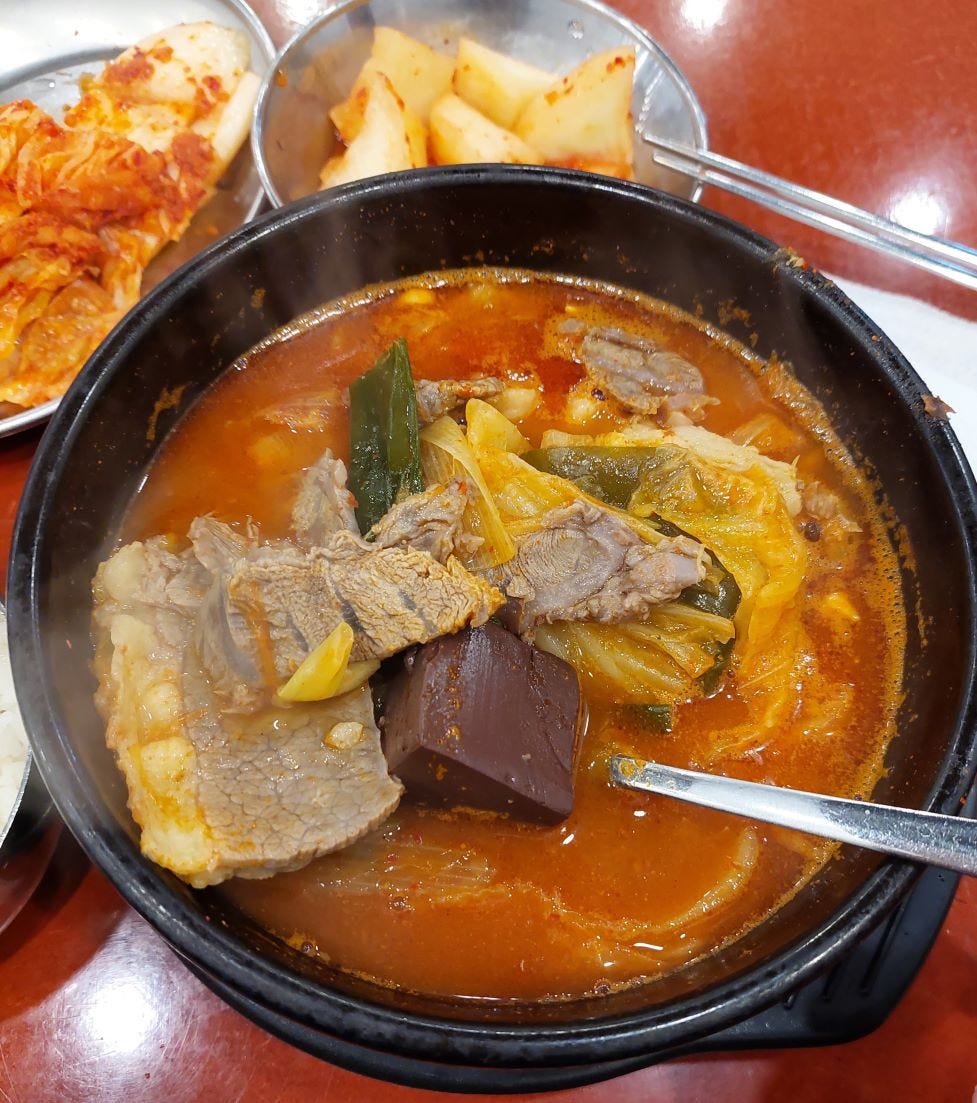
I ate here on Saturday morning at about 11: 30. And the lady working there told me to sit at this one table (they usually tell you to sit anywhere you like) because there was a reservation for 24 people. At a hae-jang soup restaurant on a Saturday morning noon around Christmas? I bet there was a story or two to be told there.
But this beef bone-based spicy looking (it’s not all that spicy, btw) soup isn’t the only hae-jang soup there is.
There is the hae-jang soup made from pork bones (뼈다귀 해장국), dried pollack and bean sprouts (황태해장국), freshwater snails (다슬기 해장국), but the most effective in my admittedly limited drinking experience is one made from the blowfish (복어).
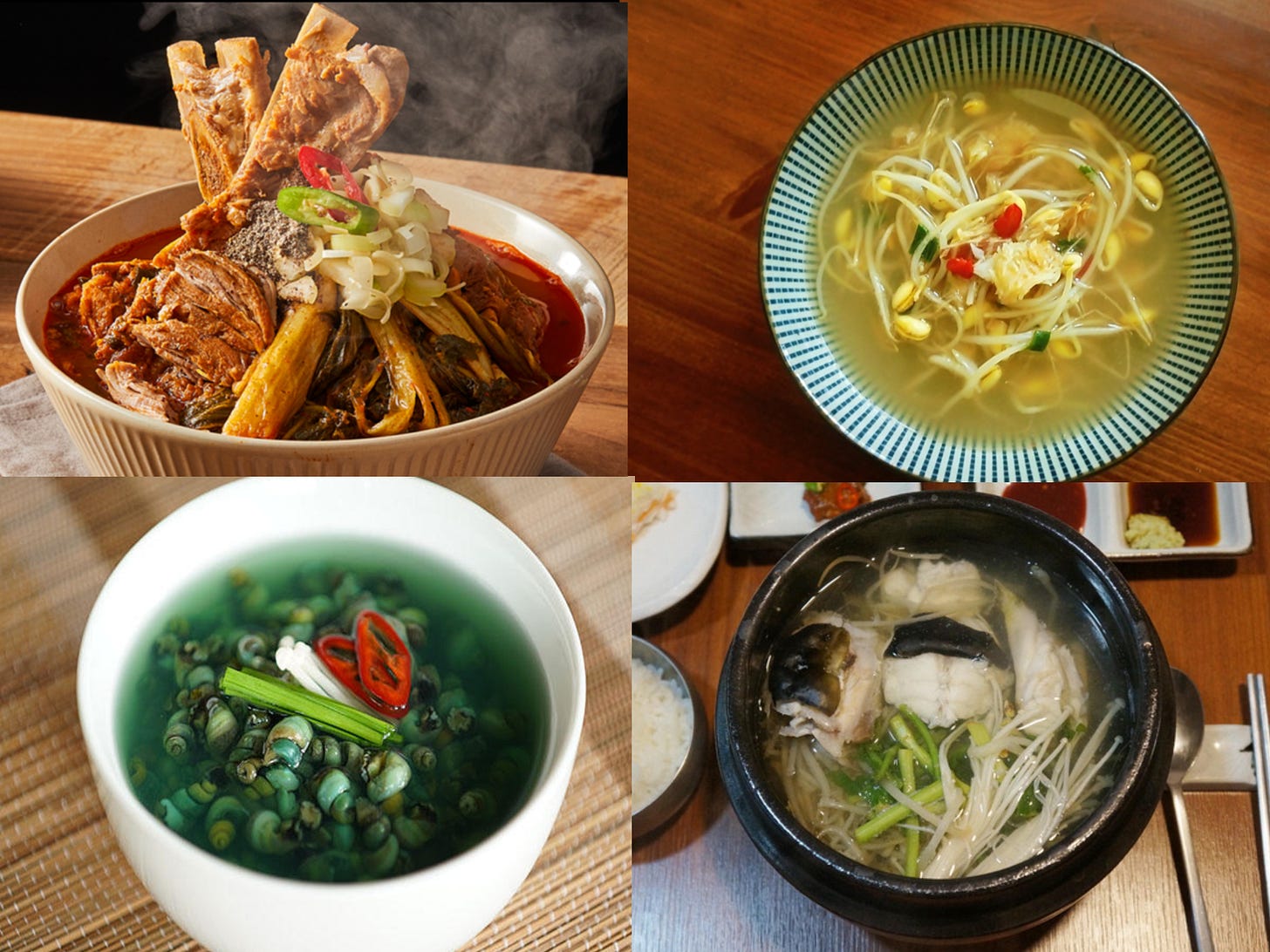
Because bok-guhk (복국) unfailingly makes me sweat profusely and “unknots” my head and inner organs in real-time while I’m eating it. It’s a profound sensation. There is no medicine that gives you such an effective and instant results, other than of course the illegal or those tightly regulated types.
But since I’m in Tokyo right now, I would be remiss if I didn’t mention ramen.

There are tons of good ramen places in LA and I’ve had lots of them, but oh… this was on another level. That first sip of that clear broth… There were a jar of crushed fresh garlic and some spicy sauce on the table too. Mix those in and you’d have a Japanese version of a wonderful hae-jang-guhk.




